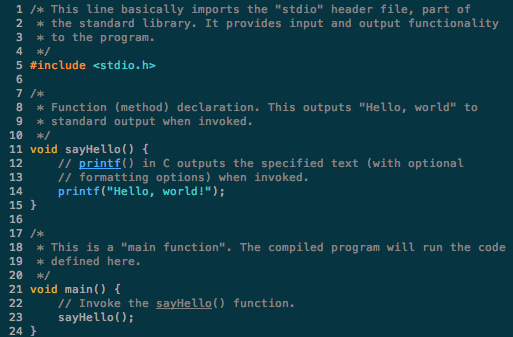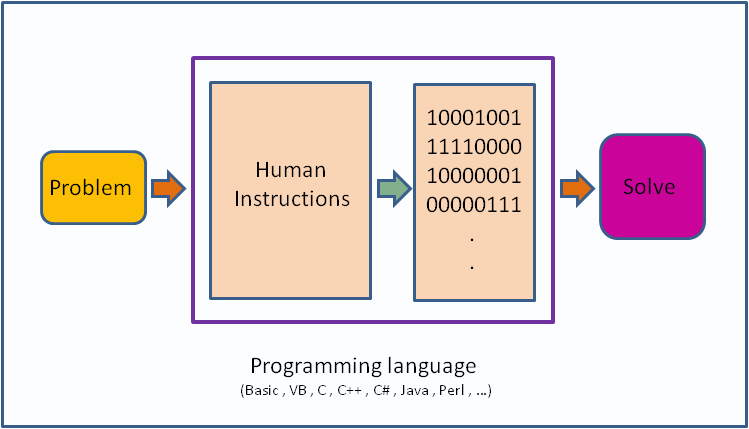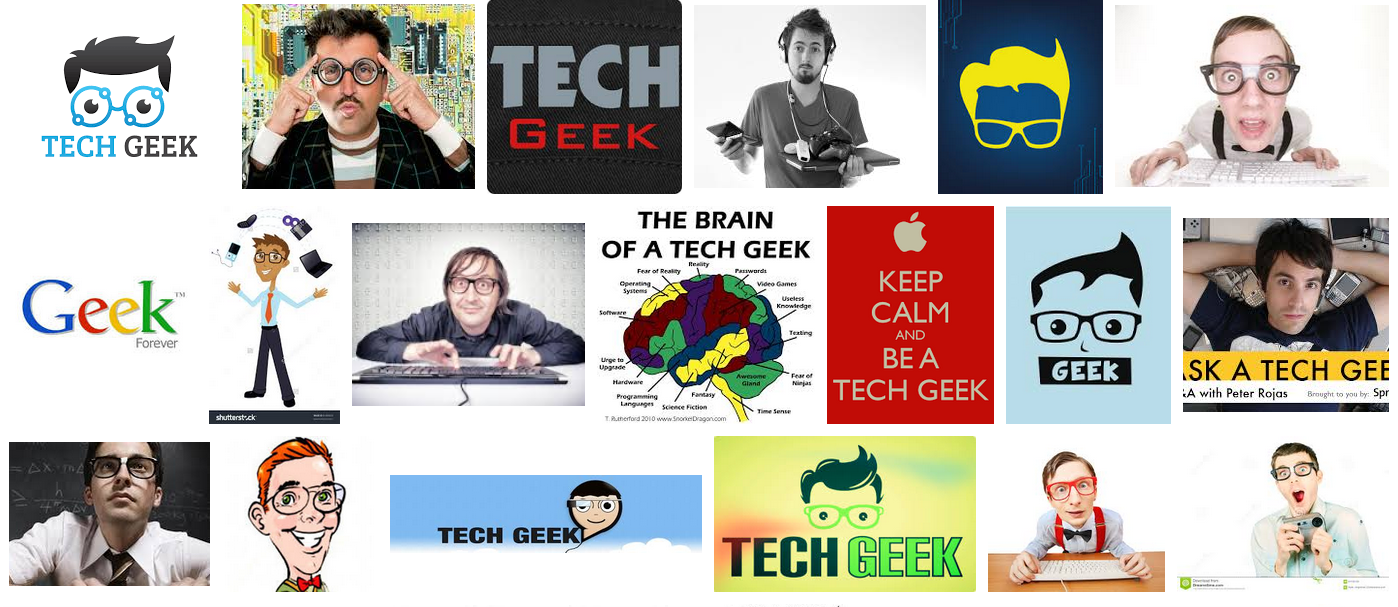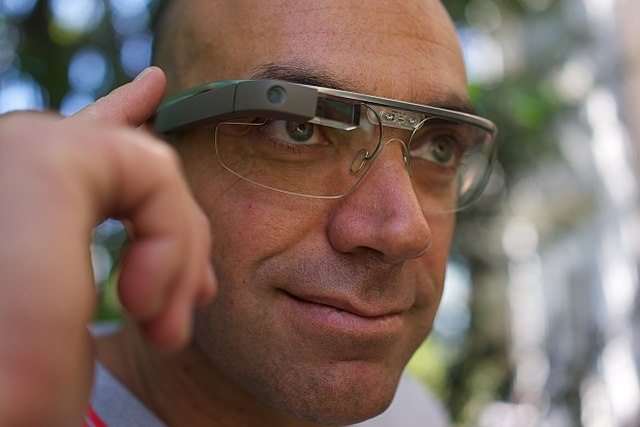
Humans Make Computers What They Are.
Most platforms have many algorithms at work at once, which can make the work they do seem so complex it’s almost magical. But all functions of digital devices can be reduced to simple steps if needed. The steps have to be simple because computers interpret instructions very literally.
Computers don’t know anything unless someone has already given them instructions that are explicit, with every step fully explained. Humans, on the other hand, can complete their understanding if you skip unimportant steps, and can complete tacit or incomplete instructions. But give a computer instructions that skip steps or include tacit steps, and the computer will either stop working or get the process wrong.
Here’s an example of the human cooperation that goes into the giving and following of instructions, demonstrated with a robot.
As an instructor, I can say to human students on the first day of class, “Let’s go around the room. Tell us who you are and where you’re from.” Easy for humans, right? But imagine I try that in a mixed human/robot classroom. All will probably go well with the first two (human) students, but then the third student, a robot with a computer for a brain, says, “I don’t understand.” It seems my instructions were not clear enough. Now imagine another (human) student named Lila helpfully tells the robot, “Well, first just tell us your name.” The robot still does not understand. Finally, Lila says, “What is your name?”
That works; the robot has been programmed with an algorithm instructing it to respond to “What is your name?” with the words, “My name is Feefee,” which the robot now says. Then Lila continues helping the robot by saying, “Now tell us where you’re from, Feefee.” Again the robot doesn’t get it. At this point, though, Lila has figured out what works in getting answers from this robot, so Lila says, “Where are you from?” This works; the robot has been programmed to respond to “Where are you from?” with the sentence, “I am from Silicon Valley.”
In the above example, human intelligence was responsible for the robot’s successes and failures. The robot arrived with a few communication algorithms, programmed by its human developers. Feefee had not been taught enough to converse very naturally, however. Then Lila, a human, figured out how to get the right responses out of Feefee by modifying her human behaviour to better match behaviour Feefee had learned to respond to. Later, the students might all run home and say, “A robot participated in class today! It was amazing!” They might not even acknowledge the human participation that day, which the robot fully depended on.
Two Reasons Computers Seem So Smart Today
What computers can do these days is amazing, for two main reasons. The first is cooperation from human software developers. The second is cooperation on the part of users.

This code written in the C programming language will display
the “Hello, world!” message.
First, computers seem so intelligent today because human software developers help one another teach computers. Apps that seem groundbreaking may simply include a lot of instructions. This is possible because developers have coded many, many algorithms, which they share and reuse on sites like Github. The more a developer is able to copy the basic steps others have already written for computers to follow, the more that developer can then focus on building new code that teaches computers new tricks. The most influential people, known as “creators” or “inventors” in the tech world, may be better described as “tweakers” who improved and added to other people’s code for their “creations” and “inventions.”
The second reason computers seem so smart today is because users are teaching them. Algorithms are increasingly designed to “learn” from human input. New algorithms automatically plug input into new programs, then automatically run those programs. This sequence of automated learning and application is called artificial intelligence (AI). AI essentially means teaching computers to teach themselves directly from their human users.
If only humans were always good teachers!
Teaching Machines the Best and Worst About Ourselves
In 2016, Microsoft introduced Tay, an AI online robot they branded as a young female. Their intention was for Tay to learn to communicate from internet users who conversed with her on Twitter—and learn she did. Within a few hours, Tay’s social media posts were so infected with violence, racism, sexism, and other bigotry that Microsoft had to take her down and apologize.
Microsoft had previously launched Xiaolce, an AI whose behaviour remained far less offensive than TAY, on Chinese sites, including the microblog Weibo. However, the Chinese sites Xiaolce learned from were heavily censored. The English-language Twitter was far less censored and rife with trolls networked and ready to coordinate attacks. Developers and users who were paying attention already knew Twitter was full of hate.
Tay was an embarrassment for Microsoft in the eyes of many commentators. How could they not have predicted and protected her from bad human teachers? Why didn’t Tay’s human programmers teach her what not to say? It certainly involved a lack of research, since bots like @oliviataters have been more successful and even benefited from a shared list of banned words that could easily be added to their algorithms.
In addition to these oversights, Tay’s failure may also have been caused by a lack of diversity in Microsoft’s programmers and team leaders.
Programming and Bias

Humans are at the heart of any computer program. Algorithms for computers to follow are all written in programming languages, which translate instructions from human language into the computing language of binary numerals, 0s and 1s. Algorithms and programs are selective and reflect personal decision-making. There are usually different ways they could have been written.
Computer programming languages like Python, C++, and Java are written in source code. Writing programs, sometimes just called “coding,” is an intermediary step between human language and the binary language that computers understand. Learning programming languages takes time and dedication. To learn to be a computer programmer, you either have to feel driven to teach yourself on your own equipment or you have to be taught to program—and this is still not common in US schools.

The many images of young white male “tech geeks” help
explain why youth who are not white or male may feel out of
place teaching themselves to code.
Because computer programmers are self-selected this way, and because many people think of the typical tech geeks as white and male (as suggested by the Google Image search to the right), people who end up learning computer programming in the US are more likely to be white than any other race, and are more likely to identify as male than any other gender.
How Can Computers Carry Bias?
Many people think computers and algorithms are neutral—racism and sexism are not programmers’ problems. In the case of Tay’s programmers, this false belief enabled more hate speech online and led to the embarrassment of their employer. Human-crafted computer programs mediate nearly everything humans do today and human responses are involved in many of those tasks. Considering the near-infinite extent to which algorithms and their activities are replicated, the presence of human biases is a devastating threat to computer-dependent societies in general—and to those targeted or harmed by those biases in particular.

Problems like these are rampant in the tech industry because there is a damaging belief in US (and some other) societies that the development of computer technologies is antisocial, and that some kinds of people are better at it than others. As a result of this bias in tech industries and computing, there are not enough kinds of people working on tech development teams: not enough women, not enough people who are not white, not enough people who remember to think of children, not enough people who think socially, not enough people who prioritize user emotions.
Remember Google Glass? You may not; that product failed because few people wanted interaction with a computer to come between themselves and eye contact with humans and the world. People who fit the definition of “tech nerd” fell within this small demographic, but the sentiment was not shared by the broader community of technology users. Critics labeled the unfortunate people who did purchase the product as “glassholes.”
Code: Debugging the Gender Gap
Created in 2015, the film Code: Debugging the Gender Gap encapsulates many of the biases in the history of the computing industry, as well as their implications. Women have always been part of the US computing industry, and today that industry would collapse without engineers from diverse cultures. Yet there is widespread evidence that women and racial minorities have always been made to feel that they did not belong in the industry. And the numbers of engineers and others in tech development show a serious problem in Silicon Valley with racial and ethnic diversity, resulting in terrible tech decisions that spread racial and ethnic bias under the guise of tech neutrality. Google has made some headway in achieving a more diverse workforce, but not without backlash founded on bad science.
Below is the trailer for the film. The film is available through most college libraries and outlets that rent and sell feature films, and through Finish Line Features.
Exacerbating Bias in Algorithms: The Three “I”s
In its early years, the internet was viewed as a utopia, an ideal world that would permit a completely free flow of all available information to everyone, equally. John Perry Barlow’s 1996 Declaration of the Independence of Cyberspace represents this utopian vision, in which the internet liberates users from all biases and even from their own bodies (at which human biases are so often directed). Barlow’s utopian vision does not match the internet of today. Our social norms and inequalities accompany us across all the media and sites we use—and are worsened in a climate where information value is determined by marketability and profit, as sociologist Zeynep Tufecki explains in this Ted Talk.
Because algorithms are built on human cooperation with computing programs, human selectivity and human flaws are embedded within algorithms. Humans carry biases and algorithms pick those up and spread these biases to many, many others. They even make us more biased by hiding results that the algorithm calculates we may not like. When we get our news and information from social media, invisible algorithms consider our own biases and those of friends in our social networks to determine which new posts and stories to show us in search results and news feeds. The result for each user can be called their echo chamber or, as author Eli Pariser describes it, a filter bubble, in which we only see news and information we like and agree with, leading to political polarization.
Although algorithms can generate very sophisticated recommendations, algorithms do not make sophisticated decisions. When humans make poor decisions, they can rely on themselves or on other humans to recognize and reverse the error; at the very least, a human decision-maker can be held responsible. Human decision-making often takes time and critical reflection to implement, such as the writing of an approved ordinance into law. When algorithms are used in place of human decision-making, I describe what ensues as The Three “I”s: algorithms’ decisions become invisible, irreversible, and infinite. Most social media platforms and many organizations using algorithms will not share how their algorithms work; for this lack of transparency, they are known as black box algorithms.
Exposing Invisible Algorithms: Pro Publica
Journalists at Pro Publica are educating the public on what algorithms can do by explaining and testing black box algorithms. This work is particularly valuable because most algorithmic bias is hard to detect for small groups or individual human users. Studies such as ProPublica’s presented in the “Breaking the Black Box” series (below) have been based on groups systematically testing algorithms from different machines, locations, and users. Using investigative journalism, Pro Publica has also found that algorithms used by law enforcement are significantly more likely to label African Americans as “High Risk” for reoffending and white Americans as “Low Risk.”
Fighting Unjust Algorithms
Algorithms are laden with errors. Some of these errors can be traced to the biases of those of developed them, as when a facial recognition system meant for global implementation is only trained using data sets from a limited population (say, predominantly white or male). Algorithms can become problematic when they are hacked by groups of users, as Microsoft’s Tay was. Algorithms are also grounded in the values of those who shape them; these values may reward some involved while disenfranchising others.
Despite their flaws, algorithms are increasingly used in heavily consequential ways. They predict how likely a person is to commit a crime or default on a bank loan based on a given data set. They can target users with messages on social media that are customized to fit their interests, their voting preferences or their fears. They can identify who is in photos online or in recordings of offline spaces.
Confronting the landscape of increasing algorithmic control is activism to limit the control of algorithms over human lives. Below, read about the work of the Algorithmic Justice League and other activists promoting bans on facial recognition. And consider: what roles might algorithms play in your life that may deserve more attention, scrutiny, and even activism?
The Algorithmic Justice League Versus Facial Recognition Tech in Boston
MIT Computer Scientist and “Poet of Code” Joy Buolamwini heads the Algorithmic Justice League, an organization making remarkable headway into fighting facial recognition technologies, whose work she explains in the first video below. On June 9th, 2020, Buolamwini and other computer scientists presented alongside citizens at Boston City Council meeting in support of a proposed ordinance banning facial recognition in public spaces in the city. Held and shared by live stream during Covid-19, footage of this meeting offers a remarkable look at the value of human advocacy in shaping the future of social technologies. The second video below should be cued to the beginning of Buolamwini’s testimony half an hour in. Boston’s City Council subsequently voted unanimously to ban facial recognition technologies by the City.

